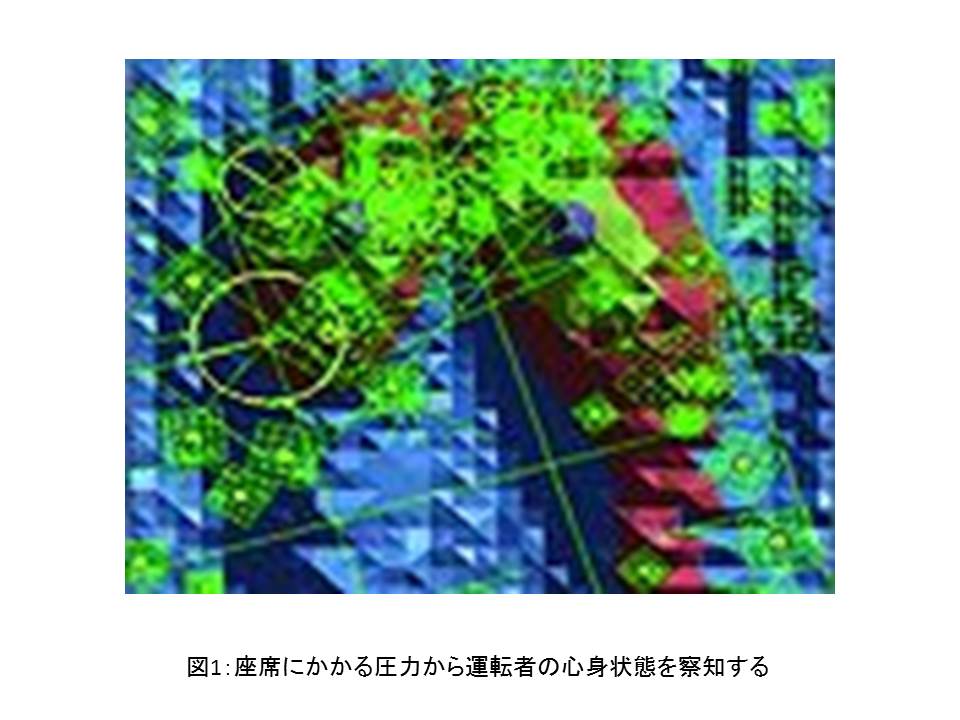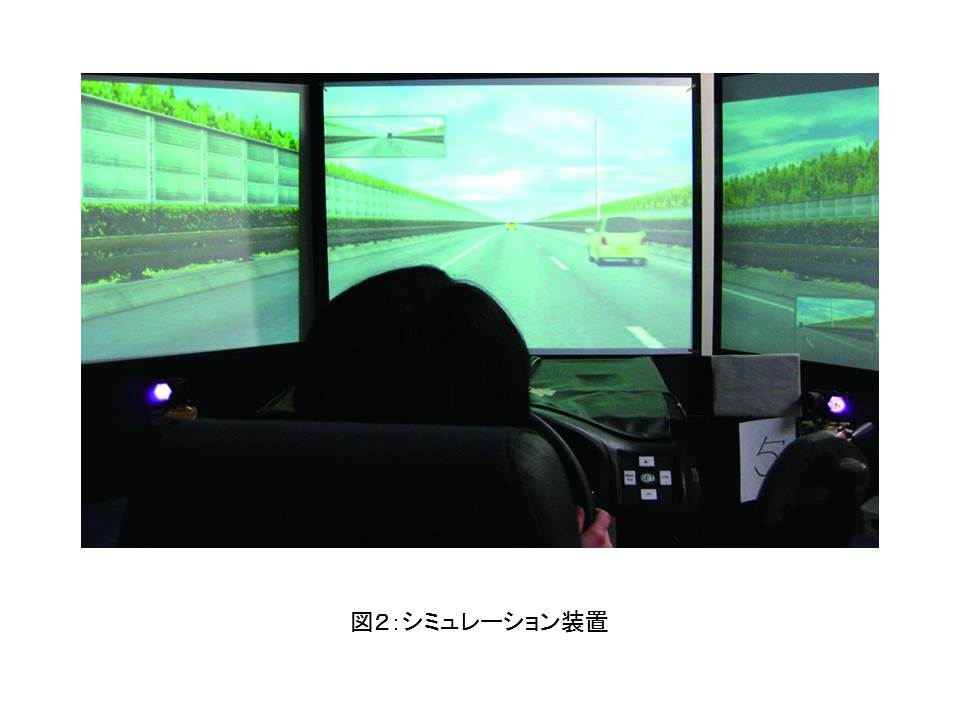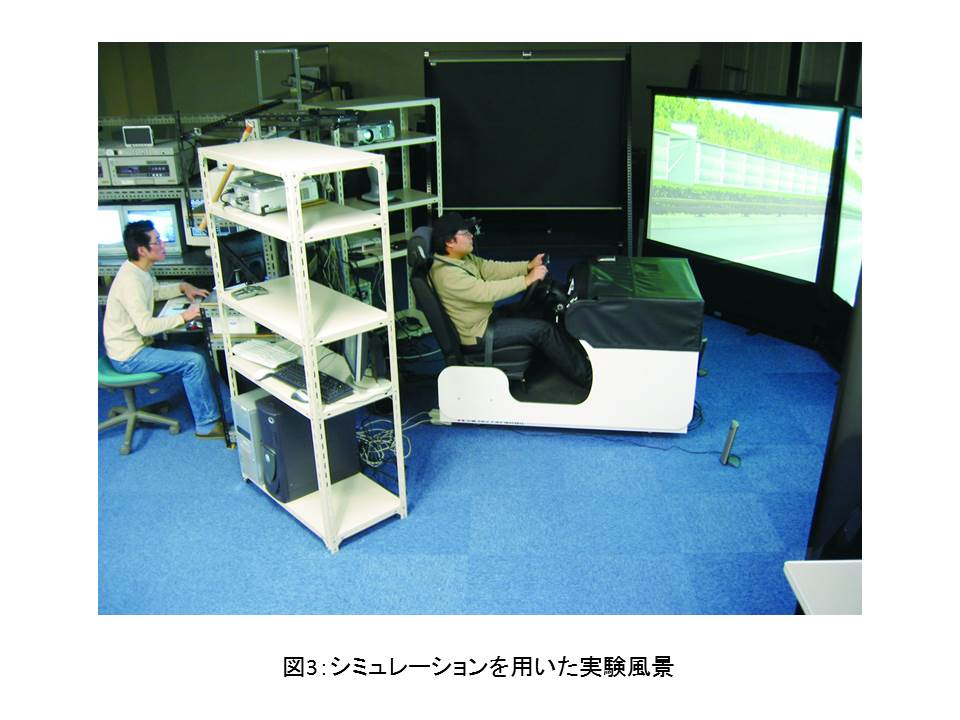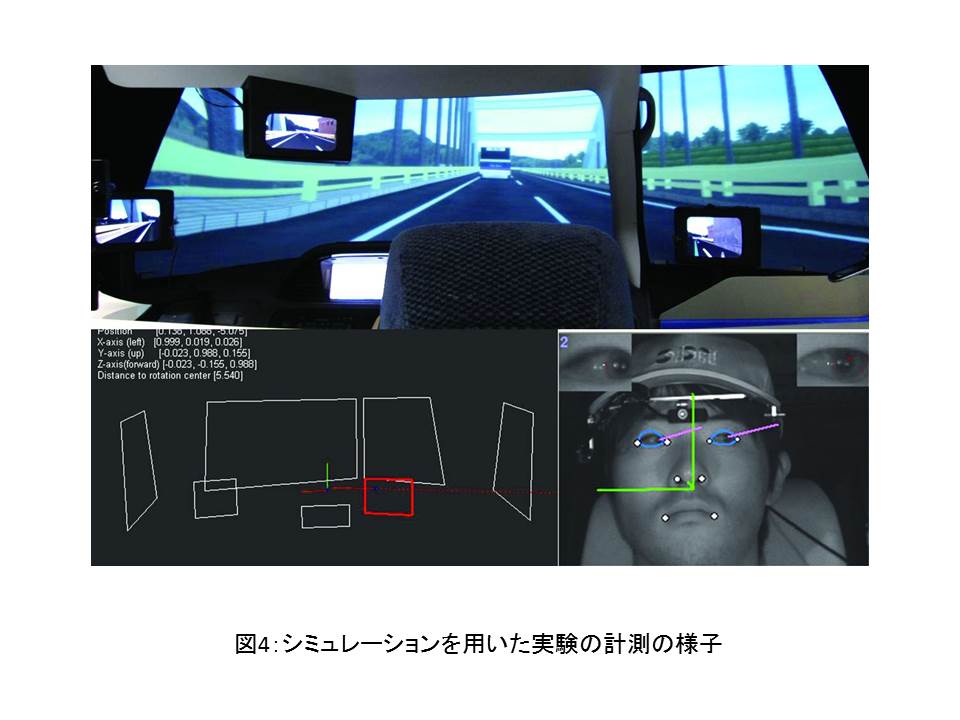キーワード: 行動支援、モニタリング、データ解析、能力評価、自動化
 車を運転中に、疲労や眠気から注意力を失うことほど怖いものはありません。そのような場合の安全性を高める方法として、車に危険回避の制御システムを取り入れる運転の「自動化」が考えられます。しかしこれには複雑な問題があり、どこまで機械に頼るべきなのか、様々な角度からの検討が必要です。本リサーチユニットは、人の状況判断や意思決定、機械への過剰な信頼から人が不注意になりやすいリスクまでも考慮・予測し、適切な自動化運転システムを作り出すことを目的としています。
車を運転中に、疲労や眠気から注意力を失うことほど怖いものはありません。そのような場合の安全性を高める方法として、車に危険回避の制御システムを取り入れる運転の「自動化」が考えられます。しかしこれには複雑な問題があり、どこまで機械に頼るべきなのか、様々な角度からの検討が必要です。本リサーチユニットは、人の状況判断や意思決定、機械への過剰な信頼から人が不注意になりやすいリスクまでも考慮・予測し、適切な自動化運転システムを作り出すことを目的としています。
人間行動のモニタリング技術が、きめ細やかな人間行動支援を実現する
自動車運転の自動化には、人間の状態・行動を理解し、人間行動支援に真に必要なことは何か、という点を明確にすることが必要です。そこで私たちは、人間行動を把握するためのモニタリング技術を開発しています。
図1の座席にかかる圧力の分布を計るセンサーは、重心の動き等から、運転者が眠くなっていないか、意識があるか、などの運転者の心身状態をモニターするものです。
また、顔の画像からは、運転者が何を見ているのか、危険を察知できているかが計測されます。このようなデータをシミュレータ(図2?4)を使って収集し、パターン認識技術により心身状態や意図を推定する技術を開発することで、特に緊急時に機械がどのタイミングで制御に介入するかを考え、人と機械が制御を適切に共有するシステム設計方法論を構築したいと考えています。



人間の認知が及ばないところを機械がサポートする
人の代替としての自動化ではなく、人間の能力の及ばないところを機械が支援する、という視点から考え、個々の認識力の違いも考慮したシステムを目指しています。例えば、緑内障のために視野が狭くなった人、高次脳機能障害のために記憶障害、注意障害を持った人の障がいを補い、安全に運転できるような制御システムをデザインできないかと考えています。また、この理論と技術は、鉄道の自動化などの他分野にも活用できるものです。
制御に機械が積極的に関わることにおいては欧米でも研究が進んでおり、私たちはフランスやオランダの大学とも連携し、幅広く研究を展開していきます。

社会への貢献・実績
● 自動車運転支援研究の国際拠点の1つとなるための基礎を確立
● 高次脳機能障害患者を主たる対象とした、運転能力評価技術の開発
● データ解析手法を実問題(とくに交通移動体の安全問題)に適用することによって、予防安全技術を高度化
(取材:平成25年6月14日)
For Collaboration between People and Machines
Unit members : Fukui, Kazuhiro
Key words:assistance, monitoring, data analysis, assessment of ability, automation
People are scared of losing concentration while driving an automobile due to fatigue or sleepiness more than anything else. One of the methods for increasing safety in such a situation is “automated” driving, or a assistance system installed in an automobile to prevent crashes. However, the automated driving system has complex problems, e.g., to what extent can we rely on it? Therefore, its  introduction should be carefully considered from many different aspects. With the aim of developing an appropriate automated driving system, our research unit considers and predicts drivers’ judgments of situations, decision-making, and inattention due to excess trust in the assistance system.
introduction should be carefully considered from many different aspects. With the aim of developing an appropriate automated driving system, our research unit considers and predicts drivers’ judgments of situations, decision-making, and inattention due to excess trust in the assistance system.
Attentive human assistance facilitated by technologies for monitoring the behaviors of people
To develop a system for automated driving, it is essential to understand the conditions of drivers and their behaviors, and identify what is required to support their actions. We are involved in the development of monitoring technologies to understand the behaviors of humans. As shown in Figure 1, the sensors determine the distribution of pressure applied to the driving seat. They monitor the physical and psychological conditions of the driver, including the sleepiness and consciousness, while detecting the movement of the center of gravity.

Figure 1: Measurement of the pressure applied to the seat to determine the physical and psychological conditions of the driver
The image of the face is used to determine what the driver is looking at and whether or not he/she is aware of danger. We develop pattern recognition technologies to assume the physical and psychological conditions of drivers and their intentions based on data collected using a simulator (Figures 2 to 4). We are determined to establish a methodology to develop a system in which both humans and machines are responsible for control, while considering the timing at which the vehicle should intervene for control in the event of an emergency.

Figure 2: Simulation equipment

Figure 3: Scene of a simulation-based experiment

Figure 4: Measurement in a simulation-based experiment
Support provided by machines to complement the cognition of humans
We develop systems in which differences in the cognition of individual drivers are taken into consideration, from the viewpoint that machines complement the ability of humans, rather than automation to replace humans. Our research unit aims to design control systems that complement the functions of people with visual impairment due to glaucoma and memory and attention problems attributed to higher cerebral dysfunction, and help them drive safely. This theory and technology can also be applied in other fields, such as automated railway systems. As research on machine-controlled systems advances in Western countries, we are promoting collaboration with French and Dutch universities to conduct a wide variety of studies.
Social contributions and achievements
● Development of technologies for assessment of the driving skills and ability of people, including patients with higher cerebral dysfunction
● Application of data analysis methods to actual problems (related to the safety of vehicles and airplanes in particular) to develop advanced preventive and safety-based technologies
